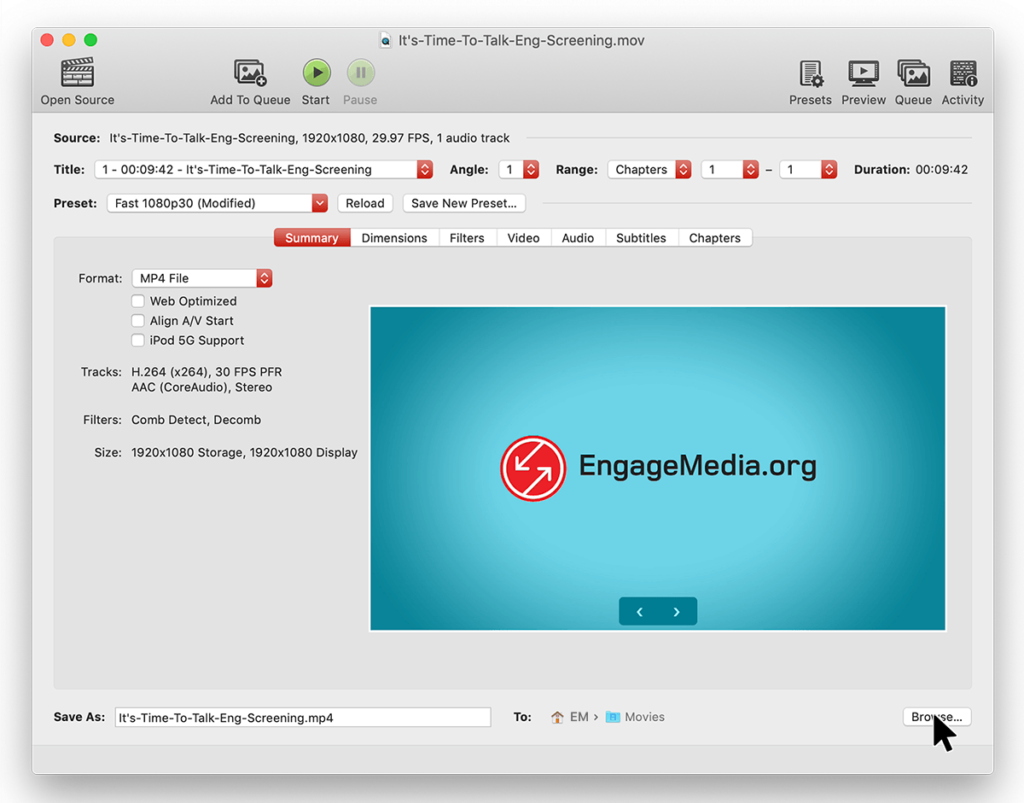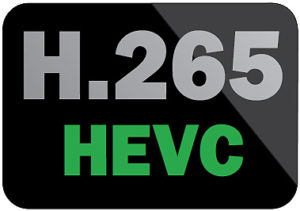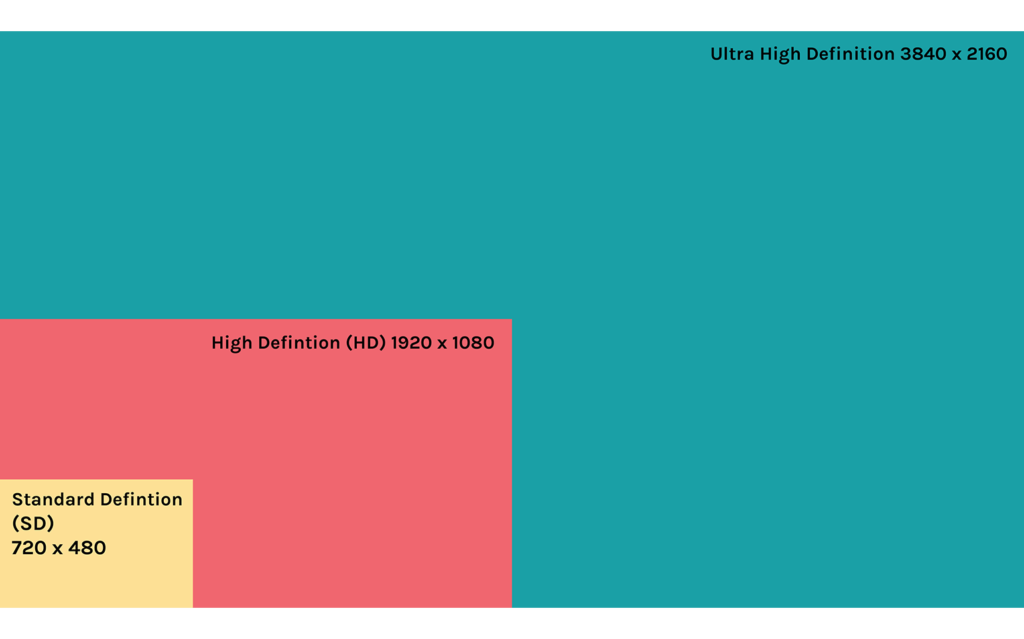What Is The Best Format To Use When Editing With Divinci Resolve To Upload To Youtube Fast
Introduction & Recommended Settings
"I've made my video, how do I get it gear up for the web?"
This is a elementary guide to compressing video for upload to the net. Compressing just means to 'make it smaller' so the file is not then large, and it doesn't take such a long time to upload/download. As engineering science improves, internet connections are getting ameliorate and faster, but at the same time, video files are getting higher in resolution and thus bigger, so pinch is however a vital step in distributing your video on the cyberspace.
Agreement this guide
Some of you will be quite familiar with video and/or internet technology, and then many of the principles we are talking virtually will make sense. Those who have been filmmakers or video editors will understand a fleck near video and audio files, and how they work. But some of you will be new to all of this, if so so don't worry, we have a Glossary of Terms that will explicate the basic concepts covered in this guide as well as step-by-step instructions to compress video using Handbrake .
Recommended Settings for Hard disk drive Video
For those of you lot who only need the settings, here are our basic recommendations what to use when compressing Hard disk drive video (where the original is 1920 10 1080 pixels) for upload to the web in 2019:
- Format MP4 (file extension .mp4)
- Video
- Codec: H264 (High contour)
- Frame Charge per unit: 24, 25, fifty, xxx or lx (Constant)
- Frame Size / Resolution: 1920 x 1080p (1080p)
- Fields: Progressive
- Bitrate: 5,000 – 10,000 kbit/due south
- Sound
- Codec: AAC-LC
- Bitrate: 320 kbit/south
- Sample Rate: 44.100 OR 48,000 kHz (retain original sample rate)
File-size Guide
For H264 encoding, you can cull a bitrate within the range we accept suggested (5,000 – 10,000 kbit/south). The college the bitrate the improve quality it will be. If you gear up the bitrate to 10,000 as opposed to 5,000, the file will be twice as big and take twice as long to upload.
| Video Length | Bitrate | File Size |
| 10:00 minutes | 5,000 kbit/south | 400 MB |
| 10:00 minutes | ten,000 kbit/south | 775 MB |
For case, if y'all start with a x-minute video, and choose 5000 kbit/s video bitrate and the settings higher up, the file-size of your compressed video will exist about 400 MB. If you choose x,000 kbit/s your file-size will be near 775 MB. You can use this guide to approximate how big your video will exist – if your video is twice as long i.e. 20 minutes, it volition be double this size i.east. most ane.5GB.
Keep in heed that most video websites automatically make even smaller versions of your video file to playback in the web browser. Some sites give you the option of letting some people download the original file you uploaded likewise.
How do I compress my video using these settings?
To skip to a elementary tutorial on how to shrink video into this format, endeavor our guide for using Handbrake on Linux, Mac, and Windows. Withal, it tin exist really helpful to know a fleck more about what you're actually doing, and why. The settings discussed hither are also applicable in other video encoders bundled with Adobe Premiere Pro, DaVinci Resolve, Concluding Cut Pro, etc. Then read on for a flake more explanation of what all those numbers and letters actually mean.
Mutual Questions
Why shrink video?

(Handbrake HandBrake is an open-source, GPL-licensed, multi-platform, transcoder.)
Equally nosotros discussed above, video files are commonly too big to upload/download without compressing them or making them smaller, first. But at that place are other reasons to compress (or 'encode') your video. You demand to create a format that the organisation you are uploading it to will sympathize, and then it needs to exist a commonly acceptable type of file. The settings higher up will playback on all relatively new computers if you lot employ software such as VLC to play information technology dorsum. Information technology will as well playback in nearly web browsers natively – check this list for details. And video-sharing sites such as EngageMedia, Vimeo and Youtube all recommend using settings like these for upload to their systems.
Annotation: It is a proficient idea to keep an original higher quality copy of your video equally a chief version too eastward.g. in Apple ProRes or your usual native editing format. This ways y'all can re-compress the video in the future, into any other format that you may need.
What happens when y'all shrink a video?
Well, the starting time thing is, information technology becomes smaller. But, the more than compressed the video is, the less quality is able to be retained, and the more degraded the image normally becomes. Compression is a compromise between quality and file size. Yet, if you employ an advanced codec such as H264 and H265 , and a reasonably high bitrate , the quality can still be very skilful, and y'all won't get compression artefacts .
What are formats, and which are the almost common?
The well-nigh mutual video file format these days is MPEG4 (which will accept the file extension ".mp4"). This works on near platforms. Formats are also chosen containers. Other common containers include WebM, Quicktime (.mov), AVI (.avi) and Matroska (.mkv).
What is a codec, and what are the best ones to use?

"Codec" stands for 'compression/decompression'. It is a slice of software, an algorithm, that is used to make your video file smaller. Information technology is used by the encoding program such equally Handbrake to make it smaller, and so by the video player such as VLC to de-compress it once more, ready for playback. H264 is the nearly common codec to utilize, creating good quality videos with relatively small file size.

H265 video is also becoming common with newer smartphones and DSLRs using information technology as a native codec. Since 2018, Facebook, Youtube, and Vimeo have supported it in their platforms. A Video transcoded using this codec can have better quality and smaller file size compared to the one where H264 was used. The biggest drawback to using H265 in transcoding is the pregnant increment in conversion time. Also, older computers may non have back up for it, both for playback and transcoding. Acquire more most codecs, container formats and more in the Glossary of Terms.
I shot my video in 4K Ultra High Definition (UHD), should I upload in this resolution also?

To exist able to watch 4K UHD videos seamlessly, Youtube recommends a consistent download speed of at least fifteen megabits per second. The global internet speed average in 2019 is eleven.03 megabits per second according to a study by cable.co.britain. Using this as a reference, it is important to consider that video playback will buffer in most internet connections.
Given the disparity of internet speed connections, it might be a good thought to know the average net speed of your target land or countries and so decide the resolution size using the table beneath:
| Resolution | Download speed required for seamless playback |
| 4K Ultra High Definition | 20 megabits per second |
| 1080p High Definition | 4 megabits per 2d |
| 720p High Definition | 2.5 megabits per second |
| 480p Standard Definition | ane.1 megabits per second |
(reference)
Nevertheless, uploading in 4K UHD makes bachelor a video with higher image quality, and viewers with fast net connection volition capeesh that. Uploading in 4K UHD is also a good move to time to come-proof video content.
I'll exist streaming my video live using social media platforms, what settings should I use?
Live video streaming is becoming popular these days because of added appointment on social media platforms. You lot don't take to be literally 'live' to go on live when using platforms like Facebook Live or Youtube Live. Open Broadcast Software, free and open-source software for video recording and live streaming, makes it possible to stream videos that were previously recorded and edited. The nearly important consideration when streaming live is your upload speed, so it is all-time to run a speed test beforehand. Bitrate should not exceed more 80% of your upload speed. For example, if your upload speed is 5,000 kbps, bitrate should not exceed 3,500.
Attempt these settings:
- Format MP4 (file extension .mp4)
- Video
- Codec: H264 (Baseline profile)
- Frame Rate: 24, 25 or thirty (Constant)
- Frame Size / Resolution: 1280 ten 720
- Fields: Progressive
- Bitrate: two,500 kbit/s
- Audio
- Codec: AAC-LC
- Bitrate: 128 kbit/s
- Sample Charge per unit: 44.100 OR 48,000 kHz (retain original sample rate)
What if my internet connection is very irksome or unreliable, and/or my audience has older, slower computers?
Try these settings for low bandwidth situations, and for end-users whose computers are older and might have trouble playing dorsum a higher-bitrate/college-resolution video such as the one we recommend settings for above:
- Format MP4 (file extension .mp4)
- Video
- Codec: H264 (Baseline profile)
- Frame Rate: 24, 25 or 30 (Constant)
- Frame Size / Resolution: 1280 x 720
- Fields: Progressive
- Bitrate: ii,000 kbit/s
- Sound
- Codec: AAC-LC
- Bitrate: 128 kbit/s
- Sample Rate: 44.100 OR 48,000 kHz (retain original sample rate)
FILE-SIZE GUIDE: A 10-minute video volition be about 160 megabytes using these settings.
What if I accept Standard Definition (SD) video instead of Hd?
Endeavor these settings for SD NTSC video:
- Format MP4 (file extension .mp4)
- Video
-
- Codec: H264
- Frame Rate: 30 (Constant)
- Frame Size / Resolution: 720 x 547(square pixels)
- Fields: Progressive
- Bitrate: two,000 kbit/s
-
- Audio
- Codec: AAC-LC
- Bitrate: 128 kbit/s
- Sample Rate: 48,000 kHz (retain original sample rate)
Try these settings for SD PAL video:
- Format MP4 (file extension .mp4)
- Video
- Codec: H264
- Frame Rate: 25 (Constant)
- Frame Size / Resolution: 768 x 576(square pixels)
- Fields: Progressive
- Bitrate: 2,000 kbit/s
- Audio
- Codec: AAC-LC
- Bitrate: 128 kbit/s
- Sample Charge per unit: 48,000 kHz (retain original sample rate)
What most mobile phones?
This guide doesn't encompass compressing video for mobile phones, as information technology's a petty more complicated. Unfortunately, there's not just 1 setting we can recommend for all devices. But if you follow our guide for compressing video with Handbrake, and and then take a await at this page on the Handbrake wiki, you can find presets y'all can easily select within Handbrake for different kinds of mobile devices – just keep in mind you may have to make several different kinds of file to suit different devices.
For a tutorial on how to compress H264 using handbrake, further information and a glossary of terms, read on…
Source: https://video4change.org/book/video-compression-guide/
Posted by: smithhakis1990.blogspot.com


0 Response to "What Is The Best Format To Use When Editing With Divinci Resolve To Upload To Youtube Fast"
Post a Comment